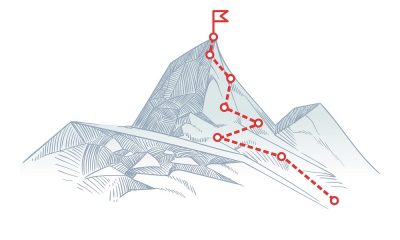5 Conversations You Need to Have with Yourself
May 7, 2016 12:00 AM EST | 5 min read
Listen to article TITLE
Listen to article 4 minutes
People often joke about talking to themselves, but it’s an important thing to do.
Nobody knows you or your experiences better than you do.
And nobody has more access to you than you do.
Sometimes I’d like to get a little break from myself, but in truth, I also am the one most able to get through to me.
For about the past six months, I’ve had the same simple conversations with myself daily – sometimes multiple times a day.
These little conversations help me stay on track for my big picture.
I want to be moving forward, making progress, doing what makes me happy and proud.
These five conversations help me to do that.
Because the road is not always straight or easy.
Here’s an example.
I got a ticket in the mail the other day for driving through a toll road.
It’s a relatively new toll road and I’d never driven on it before.
And here’s the thing: There were no toll booths and no signs and no options to get off the road.
So, I drove until my exit and got off.
A month later I got a ticket for a $2 toll and a $50 fine!
I was furious! I was arguing in my head about having been cheated and wronged.
I was upset about the money, and about how unfair it was that there were no signs or booths.
So I brought out my five conversations:
Things you need to say to yourself
1. Stop. Just stop.
Okay, it’s true that it’s easier said than done.
But’ve learned a few tricks for getting it done.
I’ve also learned that even though it’s easier to say than do, it’s important to say it! I need to tell myself to stop.
In fact, telling myself to stop allows me to begin stopping.
Vocalizing the word stop interrupts my thoughts for a moment.
In this case, I said stop out loud, closed my eyes, and took five, slow, deep breaths.
I didn’t really want to, I wanted to fume, but I knew from experience that stopping was better.
2. Tell myself where I’m stuck.
In identifying that I’m stuck in my feelings, in this case anger, unfairness, loss, and disappointment, I am able to separate myself from them.
I deliberately used the phrase “I am stuck on anger and disappointment.
” Instead of being angry, I was stuck in that emotion.
I know when I’m stuck, I can also get unstuck.
When I am angry, it’s harder to become not angry.
Having a conversation in which I point out that I’m stuck on anger, helped ready me for moving on.
3. Uncover what this is all about.
This can be a tricky conversation.
I got a ticket.
Getting a ticket doesn’t automatically lead to anger.
Why was I angry?
What was underneath that?
When I looked at it, I remembered getting on that road knowing it was a toll road (there was a sign).
I had change in the car and was prepared to pay.
But there were no toll booths.
Nothing.
So I assumed that I wasn’t on a toll part of the road.
I was only going a couple of exits.
I was willing to pay, but there were no means for me to do so.
Underneath my anger was a feeling of having been tricked.
4. Consider other possibilities.
This can also be a hard conversation to have.
While I was stuck on anger and feeling like I’d been tricked, I wanted to direct my anger at the department of transportation (or anywhere, really).
But I convinced myself to consider other possibilities.
Just because I was considering them didn’t mean I had to accept them.
With that freedom, I considered that maybe I had driven through a toll booth.
I knew that wasn’t the case.
I considered that maybe they had another way to pay that I didn’t know about.
I looked up the road on line and found that they use electronic tolling through EZ passes.
If you don’t have an EZ pass (which I don’t) you get sent a bill for the amount of the toll plus a surcharge.
5. Okay. It’s okay to get stuck.
The final conversation is to tell myself it’s okay – to have self compassion.
It’s okay to get stuck on an emotion.
It was okay that I was angry.
It was okay that I felt tricked, even though I wasn’t tricked.
I just didn’t know.
Now I know.
I’ll either avoid that route, get an EZ pass, or at least go into it knowing what will happen.
This time I didn’t know, and that’s okay.
It’s easy to remember these five conversations, because the first letter of each one (Stop, Tell, Uncover, Consider, OK) spells out the acronym S.T.U.C.K. (The fifth one is a little flexible with the K coming from OK.) Together these conversations are a part of The S.T.U.C.K. Method.
Since learning it a few months ago, I have used it to have these conversations with myself every day.
And I find myself getting unstuck more and more quickly and easily with practice.
Be the first one to leave a comment!











